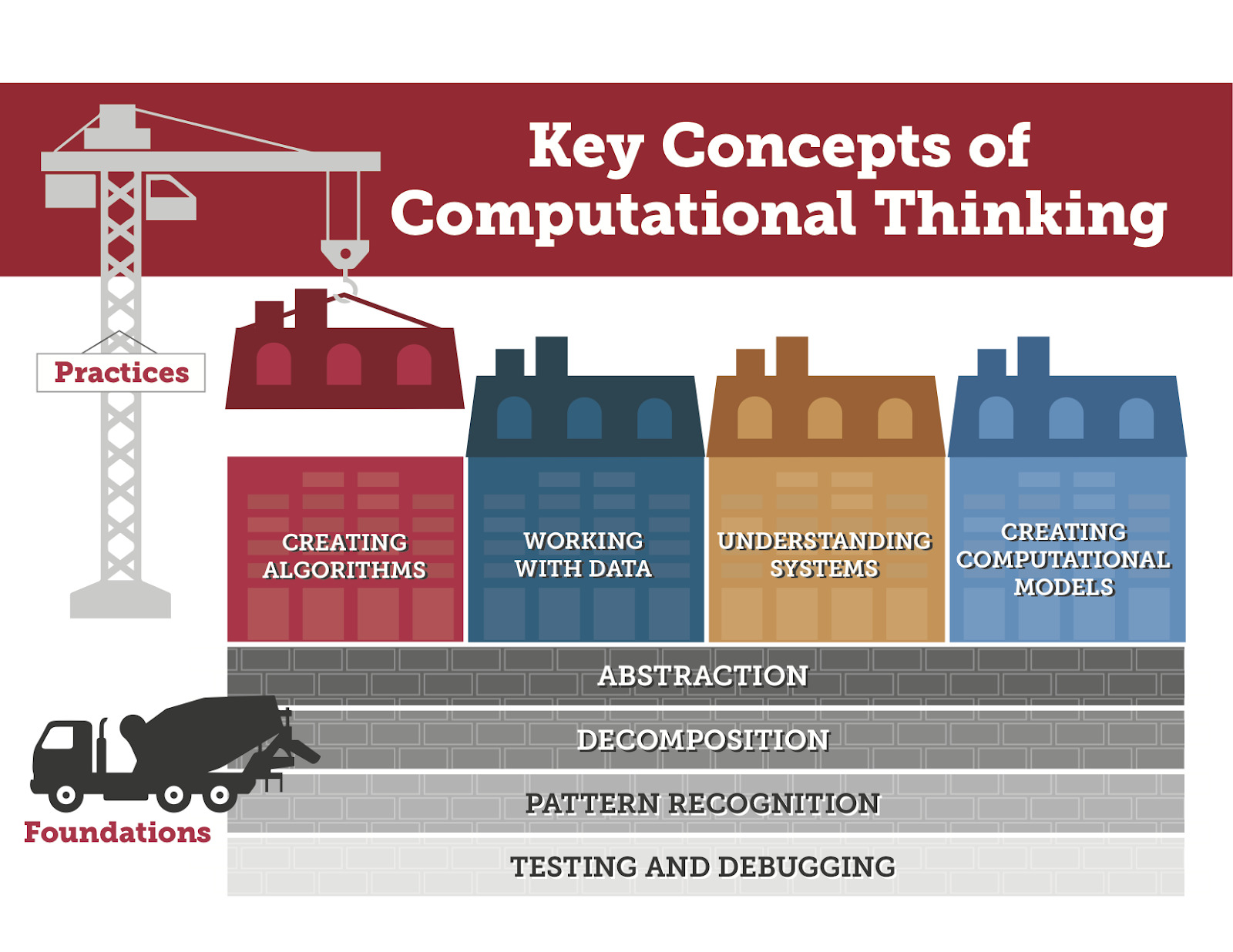Our “Key Concepts of Computational Thinking” framework supports teachers in identifying where their students can leverage computational thinking to enhance their learning. Within these eight key concepts, teachers in every subject have found intersections with what their students are expected to know and know how to do.

Drawing from both learning sciences research and feedback from educators, the key concepts of computational thinking are divided into two categories: foundations and practices. Foundations are the cognitive processes necessary to write computer programs. Practices combine the foundations with additional skills and knowledge to solve an applied problem, whether that end result is a computer program, a better comprehension of a biological ecosystem, or an increased appreciation of how human migration patterns relate to geographical landscapes.
Practices are typically applied to create or use a computational tool (computer program, simulation, data visualization, etc), but may also be applied to create analog tools as well (flowcharts, system diagram, data graph, etc).
Each of these practices requires application of all the foundations, to varying degrees. For example, when creating an algorithm, students will have to apply all the foundations as they decompose a process into its component parts, recognize patterns between those parts to identify causes and effects or repeated elements (loops), develop an abstraction that can represent the procedure in a way that can be replicated by a computer or another person, and then test and debug their algorithm to ensure the procedure delivers the expected result time and time again.
The Computational Thinking: Practices stack of educator micro-credentials recognizes educators for creating learning experiences where students can build competencies with these practices. These micro-credentials are framed around practices because the degree to which students have built foundational skills cannot be assessed until they are manifested through the applied practices.
To earn a micro-credential, teachers submit evidence of student work from classroom activities where they have applied one of the computational thinking practices (working with data is divided into two micro-credentials), as well as documentation of lesson planning and reflection. Visit Digital Promise’s micro-credential platform to find out more and start earning micro-credentials today!